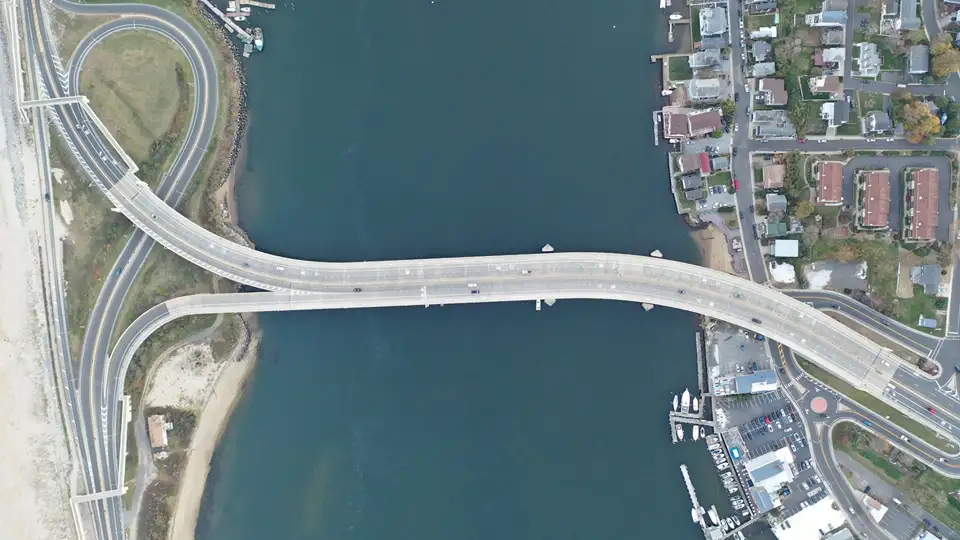- Introduction: Restoring New Jersey’s Waterways
- The Shrewsbury Channel Complex: An Overview
- Project Goals and Scope
- Dredging Operations and Contractor Details
- Sediment Removal and Management Process
- Balancing Navigation and Environmental Stewardship
- Economic and Community Impact
- Conclusion: Ensuring Safe Navigation for the Future
Introduction: Restoring New Jersey’s Waterways
The Shrewsbury Channel dredging project marks a significant step forward in maintaining New Jersey’s critical coastal navigation routes. Led by the New Jersey Department of Transportation (NJDOT), this large-scale initiative focuses on clearing the Shrewsbury Channel Complex, which has been impacted by years of sediment buildup since Superstorm Sandy.
Over time, shoaling, a natural accumulation of sand and silt, has reduced the depth of these channels, posing risks to recreational and commercial boaters. Through this targeted sediment removal effort, NJDOT aims to restore safe navigation depths and ensure that these waterways remain open, reliable, and efficient for years to come.
The Shrewsbury Channel Complex: An Overview
Located along the coast of New Jersey, the Shrewsbury Channel Complex serves as a vital link for marine traffic and local communities that depend on clear waterways for commerce and recreation. The interconnected channels within this complex have gradually filled with sediment, creating hazards that limit vessel access during low tides.
The need for dredging the Shrewsbury Channel has become increasingly urgent as shoaling impacts both safety and navigation efficiency. For boaters and marine operators, maintaining consistent channel depths is essential for preventing accidents and ensuring smooth transport along the coastline.
Project Goals and Scope
The Shrewsbury Channel dredging project is designed to restore channels to their authorized project depths, ranging from 5 to 7 feet at mean low water. NJDOT has allocated approximately $6.2 million for the initiative, which includes dredging about 100,000 cubic yards of accumulated material.
The project’s completion target is December 2025, and work will be carried out 24 hours a day, 7 days a week to meet this deadline. The operation aims not only to improve navigation but also to support the long-term stability of the waterways, preventing further shoaling in the coming years.
Dredging Operations and Contractor Details
To execute the Shrewsbury Channel dredging, NJDOT has contracted H&L Construction, an experienced dredging contractor with a strong track record in marine construction. Their team will deploy modern dredging equipment to extract sediment and transport it to designated containment sites efficiently.
Despite the scale of this operation, NJDOT has ensured that all channels will remain open to marine traffic during dredging. Temporary restrictions may be implemented for safety, but the overall accessibility of the waterway will be maintained. Around-the-clock operations ensure minimal disruption and maximum progress.
Sediment Removal and Management Process
A crucial component of the project is its sediment removal and management system. Dredged material from the Shrewsbury channels will be pumped through a pipeline to the Shrewsbury Dredged Material Management Facility.
At this site, sediment is processed, dewatered, and safely contained for reuse or disposal. NJDOT emphasizes environmentally responsible practices, ensuring that the material-handling process minimizes ecological disturbance while supporting potential beneficial uses, such as marsh restoration or shoreline reinforcement.
Through this sustainable approach to sediment removal, the project contributes to both environmental protection and long-term waterway health.
Balancing Navigation and Environmental Stewardship
While the Shrewsbury Channel dredging primarily focuses on restoring navigation, NJDOT has also prioritized environmental preservation. Dredging operations are being conducted under strict environmental oversight to protect aquatic habitats and minimize turbidity in surrounding waters.
Coordination with environmental agencies ensures that water quality standards are met throughout the project. Additionally, the dredging methods and equipment are selected to reduce noise, vibration, and sediment plume impacts, reflecting NJDOT’s balanced approach between engineering efficiency and ecological care.
This focus on responsible sediment removal demonstrates how modern dredging can simultaneously meet human needs and environmental goals.
Economic and Community Impact
The benefits of the Shrewsbury Channel dredging project extend beyond navigation safety. Clear, well-maintained waterways stimulate local economies by supporting commercial fishing, tourism, and boating industries.
For the communities surrounding the Shrewsbury River and its tributaries, improved navigation ensures safer access for emergency services and reduces long-term maintenance costs. The project also aligns with New Jersey’s broader coastal resilience strategy, helping mitigate the effects of storms and rising sea levels by maintaining efficient water flow and reducing flood risks.
By effectively removing sediment, NJDOT is not only enhancing waterway performance but also securing economic stability for waterfront communities.
Conclusion: Ensuring Safe Navigation for the Future
The Shrewsbury Channel dredging project represents NJDOT’s commitment to maintaining the safety, accessibility, and sustainability of New Jersey’s coastal waterways. By removing nearly 100,000 cubic yards of sediment and restoring depths to their authorized levels, the project will ensure safer navigation and support the region’s marine economy.
More importantly, the initiative highlights how proactive sediment removal strategies can protect both the environment and infrastructure. As NJDOT continues its dredging operations across the state, projects like the Shrewsbury Channel Complex serve as a model for how modern dredging can harmonize navigation, environmental stewardship, and community development.
